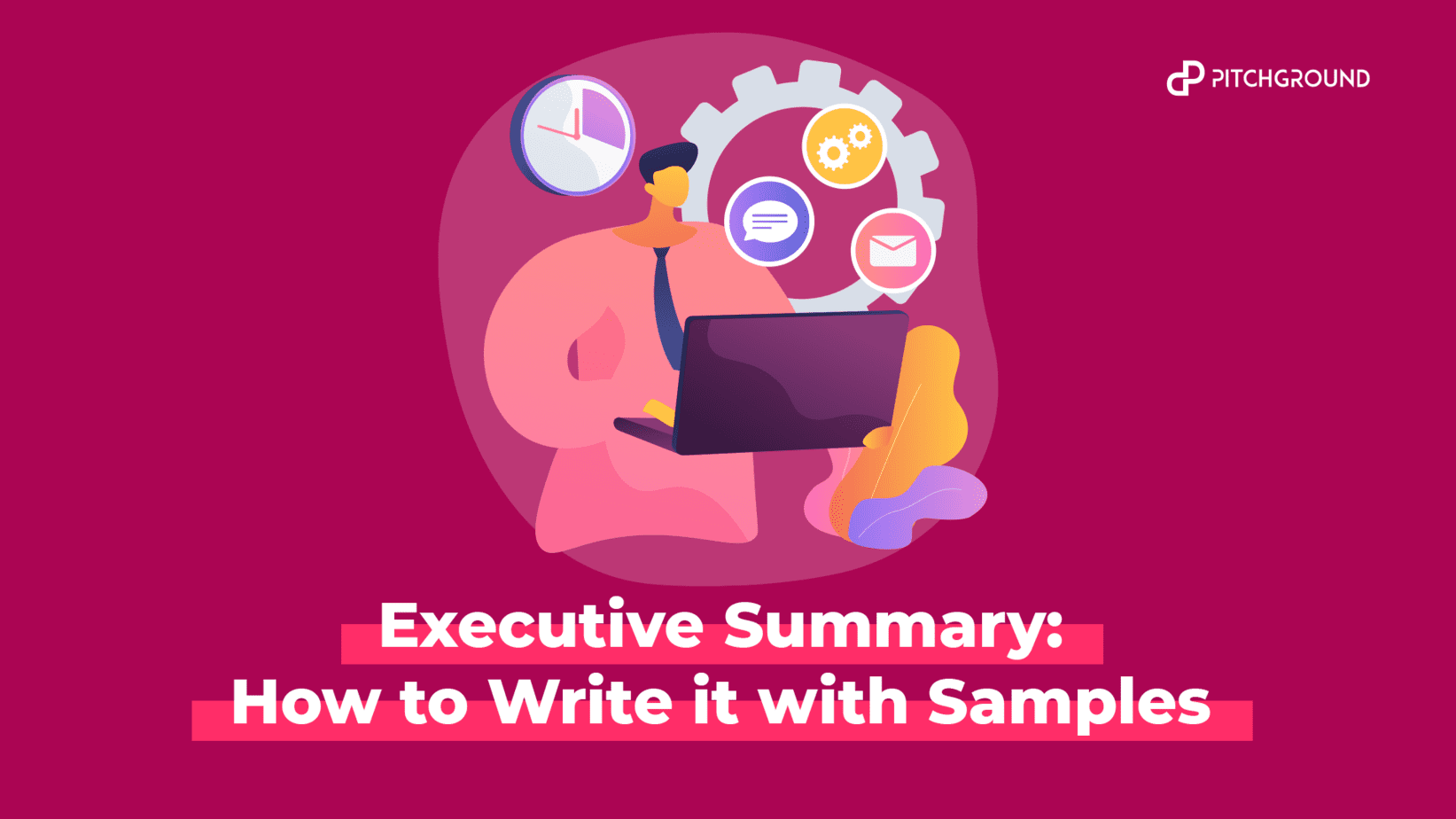An executive summary is a concise overview of what something is about.
As a business professional, you know that an excellent executive summary can make a big difference in how well a document gets read and understood by others.
Whether you’re writing a proposal or report or just trying to get someone interested in your idea, having a clear and concise summary makes a huge difference.
What is an Executive Summary?
An executive summary (ES) or executive outline is a condensed version of a longer document.
The ES should contain the main points of the report. In addition, it should include information such as the purpose of the study, the methodology used, the findings, the conclusions, and recommendations.
An executive summary is usually written for senior executives unfamiliar with the topic at hand.
This type of writing is often found in reports, presentations, proposals, and other documents where the writer has limited time to convey important information.
An executive summary should always begin with the title; then immediately follow with a concise sentence stating the purpose of the study.
Next, present a brief overview of the project and its goals. After that, summarize the significant findings of the research. Finally, provide a conclusion that summarizes the key takeaways from the study.

Statistics
- Every time you sit down to write an executive summary, you have to reinvent the wheel and make it 100% tailored to that one customer, that one investor, or that one board member. (storydoc.com)
How to Write an Executive Summary and Why to Write it?
Executive summary writing is similar to writing a business plan.
The main difference between the two is that a business plan focuses on financial projections, whereas an executive summary focuses on what you’re going to do about something.
When you write an executive summary, you’re writing about a specific project that you’ve decided to take on.
For example, you could write an executive summary for a research paper, a proposal, or a thesis.
But most people use them when they prepare their annual reports and/or quarterly reports for stockholders.
Writing an executive summary takes some practice, but if you work hard enough, you’ll eventually get better at this skill.
Whether you’re preparing a report for school or work, a cover letter, or a proposal, an executive summary can help communicate your ideas to others more effectively.
1. Start With the Title – Include the Project Purpose
The first step in creating an executive summary is to decide on the overall purpose of the document.
This could be anything from summarizing a lengthy report to giving feedback to a client. If you’re working on a particular project, you may want to explain why you chose this specific project and how it fits into your more extensive portfolio.
2. State Your Objectives – Define What You Want to Achieve
Now that you know what you want to achieve through your project think about the objectives of writing your executive summary.
How will this particular piece benefit your audience? Are there any questions you need to be answered by the end of the project? What key findings does this project produce?
You might also consider using these questions as a checklist to ensure your executive summary meets all your project’s requirements.
For example, “Why did I choose this project?” and “What was my goal with this project?” can help you assess whether your project fulfills the stated purposes of the project outline.
3. Summarize the Results
An executive summary should always start with a title and a short summary of the results. This should include the following elements:
• A brief description of the project
• Any technical terms used in the research
• Key findings, such as recommendations
• Conclusions based on the data collected
A good executive summary should answer the following questions:
• Who are the intended audiences?
• What information will they need to understand the project?
• How will this project add value to their lives?
You may find it helpful to set up a template before you start writing. You could even create several templates, so you don’t have to spend too much time coming up with new ones every time you start a project.
4. Conclusion
After you’ve summarized the results of your project, you’ll want to conclude the document.
The conclusion section helps readers see the big picture. It brings together everything you learned throughout the rest of your report.
So make sure you carefully plan this part of your writing process.
5. References & Resources
Finally, you should reference sources used in your project and list any resources (such as websites) that helped you complete it.
Make sure that you provide links to valuable resources whenever possible. Also, keep in mind that many academic institutions require referencing for projects completed outside of class.
Why should you write an executive summary?

First, you should write an executive summary if you have a goal or objective.
This means that you’re writing an executive summary because you want to accomplish something.
For example, maybe you want to apply to graduate school. Or perhaps you want to get a job after graduation.
Whatever your goal is, you must first decide it before you can write an executive summary.
Second, writing an executive summary makes you more marketable to potential employers and clients.
An executive summary gives the reader a quick overview of what you’ve done and who you are as a professional. This allows them to quickly learn about you and how you can benefit them.
Third, writing executive summaries teaches you the basics of effective communication. Your ability to communicate effectively will continue to grow as you work with different types of documents over the years.
What to Include in an Executive Summary:
An executive summary is a short document that summarizes what is included in a more extended report. It’s meant to be read quickly instead of wading through pages of text and charts.
An executive summary should address three main points:
• What is the purpose of the report?
• Who is the audience?
• Why does the reader care about the information?
When writing an executive summary, focus first on answering these questions.
1. What Is The Purpose Of The Report?
A report summarizing an investment opportunity may explain the company’s business strategy or provide details about the specific project.
An executive summary may summarize the key findings that evaluated a product or service. A report about a scientific experiment may describe the results of the research.
2. Who Is The Audience?
The audience for an executive summary usually consists of people who have read the full report.
The summary must accurately reflect the original document’s content and answer the questions posed in the title of the report.
3. Why Does The Reader Care About The Information?
The report’s author wants readers to understand the importance of the information presented in the report.
To do this effectively, the executive summary should highlight the most critical aspects of the report.
This means focusing on the critical points of the report rather than repeating everything found in the original document.
For example, if the report explains why a particular financial instrument is attractive, the executive summary should state why investors should consider buying the security.
If the report provides background information about the company, the executive summary should give context so that readers understand why the information is essential.
4. Include Key Points In Your Executive Summary
Include some of the following elements in your executive summary:
• Title page
• Abstract
• Introduction
• Background
• Conclusion
Title Page:
This part of the executive summary includes the name of the report, its title, author(s), publisher, publication date, and location.
The title page may also contain contact information and acknowledgments.
Abstract:
The abstract briefly describes the content of the report. It typically begins with a one-sentence summary of the report’s main points.
Introduction:
The introduction briefly states the report’s purpose and provides information about the subject matter.
Usually, it begins with a thesis statement that defines the key concepts and terms used in the report.
Background:
The background section describes the history of the subject being reported upon.
It also gives an overview of the organization or type of business involved in producing the report.
Conclusion:
The conclusion presents a summary of the report’s major points. It should clearly show how the report answers the question that prompted its creation.
What to Avoid:

Many people still don’t realize what an executive summary really is. An executive summary is a short statement about your business proposal.
It’s a summary of everything in your report that helps the reader understand what you’re trying to do.
In fact, an executive summary is often one of the first things a client sees in your proposal.
So, what should you avoid in an executive summary?
Here are the top 5 mistakes you shouldn’t make:
1. Don’t Make Your Executive Summary Too Long
Most clients won’t read every word of the entire document. They’ll skim it, take notes, and then decide whether to hire you based on what they see.
Keep your executive summary under 1 page. The average person skims over a page and decides within 30 seconds if they want to continue reading.
If you write a more extended executive summary, you may cause the client to skip past you and go straight to the following proposal.
2. Don’t Include Unnecessary Details
Executive summaries aren’t meant to provide a full explanation of your project. Instead, you should include information that’s relevant to the reader.
For example, if you’re writing an executive summary for a marketing plan, don’t give details on your company’s history. That’s not relevant.
Instead, focus on what would interest your target audience most: your product, service, or idea.
3. Don’t Include Marketing Information
Don’t use your executive summary to promote yourself or your company. Focus instead on explaining your idea so that your potential customer understands why this is important to them.
Once you’ve done that, you can talk about yourself or your company later in the proposal.
4. Avoid Using Excessive Grammar Or Punctuation Marks
As mentioned earlier, your job isn’t to sell yourself or your company. Your goal is to convince your client that you’re the best person for the job.
You need to create a clear message that makes your case to accomplish this.
Avoid using words like “I,” “me,” “myself,” and “my” whenever possible. The same goes for the phrases “it was my idea” and “we did it.”
Use simple language that emphasizes the benefits of your proposal. You want to show that you’re capable of delivering results professionally.
5. Don’t Use Wordy Language
While you can add personality to your proposals, don’t use too many adjectives. Just stick to factual information.
Also, avoid using passive voice. For example, say: “We had a great experience working with X company.” Don’t say: “X company worked well with us.” Active voice is better than passive voice.
By avoiding these five common mistakes in your executive summary, you’ll increase your chances of getting hired.
Example:
Executive Summary Example 1: A Study of Obesity Among Adults With Low Income and Education Levels
Introduction
Obesity is a significant public health concern affecting both children and adults worldwide. The World Health Organization estimates that approximately 2 billion adults are overweight and 400 million are obese. According to the Centers for Disease Control and Prevention, obesity has increased from 30% of U.S. adults in 1980 to almost 40% today. While the prevalence of obesity among children has decreased since the late 1990s, the rate of increase among adults has been much higher. In fact, according to the CDC, the number of obese adults rose from 17.5% in 1999 to 29.6% in 2010.
Methods
To determine whether obesity rates differ among adults with different socioeconomic backgrounds, researchers used data collected during the National Health and Nutrition Examination Survey (NHANES) conducted by the CDC from 2005 through 2007. These surveys consist of interviews and physical examinations administered to more than 20,000 participants aged 18 years and older. Participants completed questionnaires about their lifestyle habits, including diet, exercise, and alcohol intake. Researchers also measured height and weight to calculate body mass index (BMI), a measure of body fat based on height and weight. BMI was calculated using the formula: Weight in kilograms divided by height in meters squared.
Results
From the NHANES survey, researchers identified 3,926 individuals who had low income and/or low educational status. Of these individuals, 1,879 (46%) were classified as obese. Compared to those with high incomes and/or college degrees, obese individuals with low incomes and/or low educational levels were significantly less likely. However, they did not have significantly different dietary patterns compared to other groups. They also reported exercising less frequently than others and consuming fewer fruits and vegetables. However, no significant differences were found regarding alcohol consumption.
Conclusion
While it is clear that obesity affects all social classes, lower socioeconomic status does not necessarily lead to poorer eating habits or lack of exercise. Further studies need to be done to identify the link between obesity and low socioeconomic status.
Questions
1. How long should an executive summary be?
An Executive Summary is a short document that summarizes the report’s main points. It’s usually around 500-1000 words.
2. What is an executive summary in a business plan?
An Executive Summary (ES) is your business plan’s first section. It’s designed to grab the reader’s attention and provide them with a quick overview of what you are doing, why you are doing it, who you are doing it for, and how you intend to achieve success.
3. What is the difference between an executive summary and a summary?
An executive summary is shorter than a summary. A summary is usually one page. It provides a brief description of the contents of the report. It contains information about the report’s purpose, its audience, and its structure. The executive summary is similar to a synopsis.
The Bottom Line:
An executive summary is the first paragraph of your Business Plan. This is where you introduce yourself and tell readers what you’re going to do. You can use this space to describe the problem you want to solve, the market opportunity you see, your target customer, your business objective, and your business model.
The executive summary should be written in the third person, passive voice, and present tense and should be concise.



